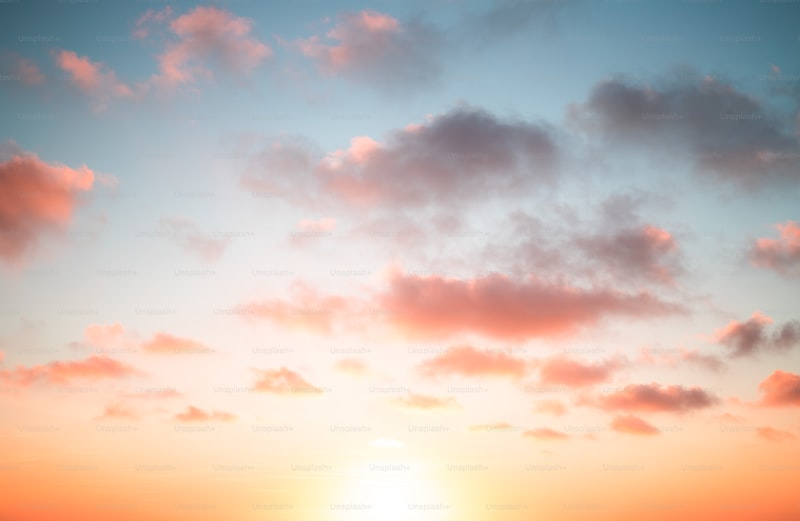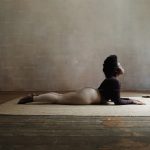Ashtanga Yoga is often considered one of the toughest styles of yoga, as many of the sequences rely heavily on high-energy vinyāsas. I personally used to stay away from the practice due to a knee injury that acted up during intense flows. However, I secretly cherished a dream of practicing Ashtanga Yoga…
The dream came true when I met a particularly inspiring teacher at class one day. He was leading a class where the emphasis lies in activating and strengthening your core and Solar Plexus, but I didn’t realise that it was Ashtanga-based! So I found myself in the middle of a very high-energy, very vinyāsa warm-up, this time beginning with no less than eight rounds of Sun Salutation A!
Ashtanga vs. Sivananda Sun Salutations
This style of Sūrya Namaskār differs from other styles, such as Sivananda-based Sun Salutations. To help illustrate that, let’s take a look at a few of the key differences:
| Sivananda | Ashtanga A | Ashtanga B | |
| Total number of poses | 12 | 11 | 19 |
| Intensity | Mild | Moderate | Intense |
| Level | Beginner | Intermediate | Advanced |
| Vinyasa | Slow with focus on breath | Moderate vinyāsa | Quick |
| Round | Two repetitions (left and right) | One repetition | One repetition |
As you can see, the Ashtanga styles of Sun Salutation are a bit more demanding than the Sivananda, or even Iyengar styles. For someone who’s more used to the Sivananda style, being put through eight of the others can cause the body no little amount of shock! What exactly do they look like? Read on to find out!
Ashtanga Sun Salutation A
As mentioned in the table, there are 11 poses that make up this style.
- Tādāsana (Mountain Pose): Take three deep breaths to prepare your body for the vinyāsa. Straighten your knees and elongate your spine and neck as if your head is touching the ceiling.
Inhale. - Ūrdhva Hastāsana (Raised Arms Pose): Lift your arms overhead, feeling a slight stretch in the side ribs.
Exhale. - Uttānāsana (Forward Fold): Bend forward from the hips, leading from the chest. Spread your fingers as the palms rest flat on the floor.
Inhale. - Ardha Uttānāsana (Half Forward Fold): Raise halfway up and keep your spine straight. Lift your head and fix your gaze at a point in front of you, with your fingertips grazing the floor or on the sides of your calves.
Exhale.
- Chaturanga Dandāsana (Four-Limbed Staff Pose): Press your palms down, with your fingers spread wide, and either walk or jump back bringing the elbows close to the chest.
Inhale. - Ūrdhva Mukha Śvānāsana (Upward Facing Dog Pose): Roll onto the tips of your toes, pushing the torso and thighs off the floor. Straighten your arms and draw your gaze upwards.
Exhale. - Adho Mukha Śvānāsana (Downward Facing Dog Pose): Tuck your toes and lift your buttocks and hips to the sky. Straighten your spine and stretch your arms. Push the heels down and close to the floor.
Inhale. - Ardha Uttānāsana (Half Forward Pose): Bend your legs and jump forward, in between your palms. Lift your head and straighten your spine, fingertips resting on the floor.
Exhale. - Uttānāsana (Forward Fold): Bend forward and bring your chest to the knees; palms go flat on the floor.
Inhale. - Ūrdhva Hastāsana (Raised Arms Pose): Raise your arms over your head and straighten up with a straight spine.
Exhale. - Tādāsana (Mountain Pose): Release your arms on either side of the body and relax.
This completes one round of Sun Salutation A in the Ashtanga style. Feel free to take a few moments in Tadāsana to catch your breath before moving on to another round, or the next set of Sun Salutations.
Ashtanga Sun Salutation B
Once you’ve completed the Sun Salutation A to your satisfaction, you can move on to the second set:
- Tādāsana (Mountain Pose): Allow your body to prepare itself to begin the flow by taking three deep inhalations and exhalations. Keep the hands along your body, palms resting flat on the thighs.
Inhale.
- Utkatāsana (Chair Pose): Bend your knees until the fingertips touch the mat. Sweep your hands overhead and draw your shoulders down and back. Push your hips back and adjust the knees so that you could see your toes.
Exhale. - Uttānāsana (Forward Fold): Bend forward from the hips and allow the palms to rest flat on the mat. Keep the fingers spread.
Inhale. - Ardha Uttānāsana (Half Forward Fold): Lift your head up and come halfway, keeping the spine straight. Fingertips rest on the mat.
Exhale. - Chaturanga Dandāsana (Four-Limbed Staff Pose): Place your palms firmly on the mat and jump back, aligning your body parallel to the floor. Let the elbows hug the chest.
Inhale. - Ūrdhva Mukha Śvānāsana (Upward Facing Dog Pose): Roll onto the tops of your feet and lift your torso, chest, and thighs off the floor. Bend backward and fix the gaze to the ceiling.
Exhale. - Adho Mukha Śvānāsana (Downward Facing Dog Pose): Tuck your toes and lift your hips to the sky. Straighten your spine and stretch your arms, pushing your heels down into the mat.
Hold for 2-3 breaths. Exhale.
Place your left foot at a forty-five degrees angle and place your right foot in between the palms.
Inhale. - Vīrabhadrāsana I (Warrior 1): Sweep your arms overhead, with your hips squared to the front.
Exhale. - Chaturanga Dandāsana (Four-Limbed Staff Pose): Place the palms down, push your right leg back, and lower into a low plank.
Inhale. - Ūrdhva Mukha Śvānāsana (Upward Facing Dog Pose)
Exhale. - Adho Mukha Śvānāsana (Downward Facing Dog Pose)
Hold for 2-3 breaths.
Place your right foot at a forty-five degrees angle and place your left foot in between the palms.
Inhale. - Vīrabhadrāsana I (Warrior 1): Sweep your arms overhead, hips squared to the front.
Exhale. - Chaturanga Dandāsana (Four-Limbed Staff Pose)
Inhale. - Ūrdhva Mukha Śvānāsana (Upward Facing Dog Pose)
Exhale. - Adho Mukha Śvānāsana (Downward Facing Dog Pose)
Inhale. - Ardha Uttānāsana (Half Forward Fold): Jump and bring your legs in between your palms, lift your head, and straighten the spine. Let the fingertips rest on the floor.
Exhale. - Uttānāsana (Forward Fold): Bend your body forward and bring your head to the knees; palms go flat on the floor.
Inhale. - Utkatāsana (Chair Pose): Bend the knees and sweep the hands over your head.
Exhale. - Tādāsana (Mountain Pose): Straighten the knees and spine and let the hands rest along the body.
Take a few breaths, and you’ve done one round of Sun Salutation B!
Modifications Make Things Better
To those who are new to this style, jumping between poses might be a little difficult, such as from Chaturanga Dandāsana from Half Forward Fold or from Downward Facing Dog to Half Forward Fold. To work around this, simply walk into these postures until you find your comfort zone.
If you have a back, knee, shoulder, or wrist injury, Chaturanga Dandāsana could be difficult for you. In this case, an easy substitute would be Ashtanga Namaskār, or the Eight-Limbed Salutation from that I describe in this article. These modifications can easily be applied to both the A and B variations in this style without compromising on the effectiveness of the practice.
The Choice Is Yours
Nowadays, I practice all the four variations of Sun Salutation. Some days, that’s all I do! They’re an indispensable part of any yoga practice — at home, at the studio or wherever you are. The best part about having several different styles to choose from is that each one brings it’s own unique challenges and benefits.
Have you found a preferred style of Sun Salutation? Is it part of your daily practice? Or do you have a different variation that you prefer to bring out when warming up? We’d love to hear about how you include this integral sequence into your personal yoga practice!













